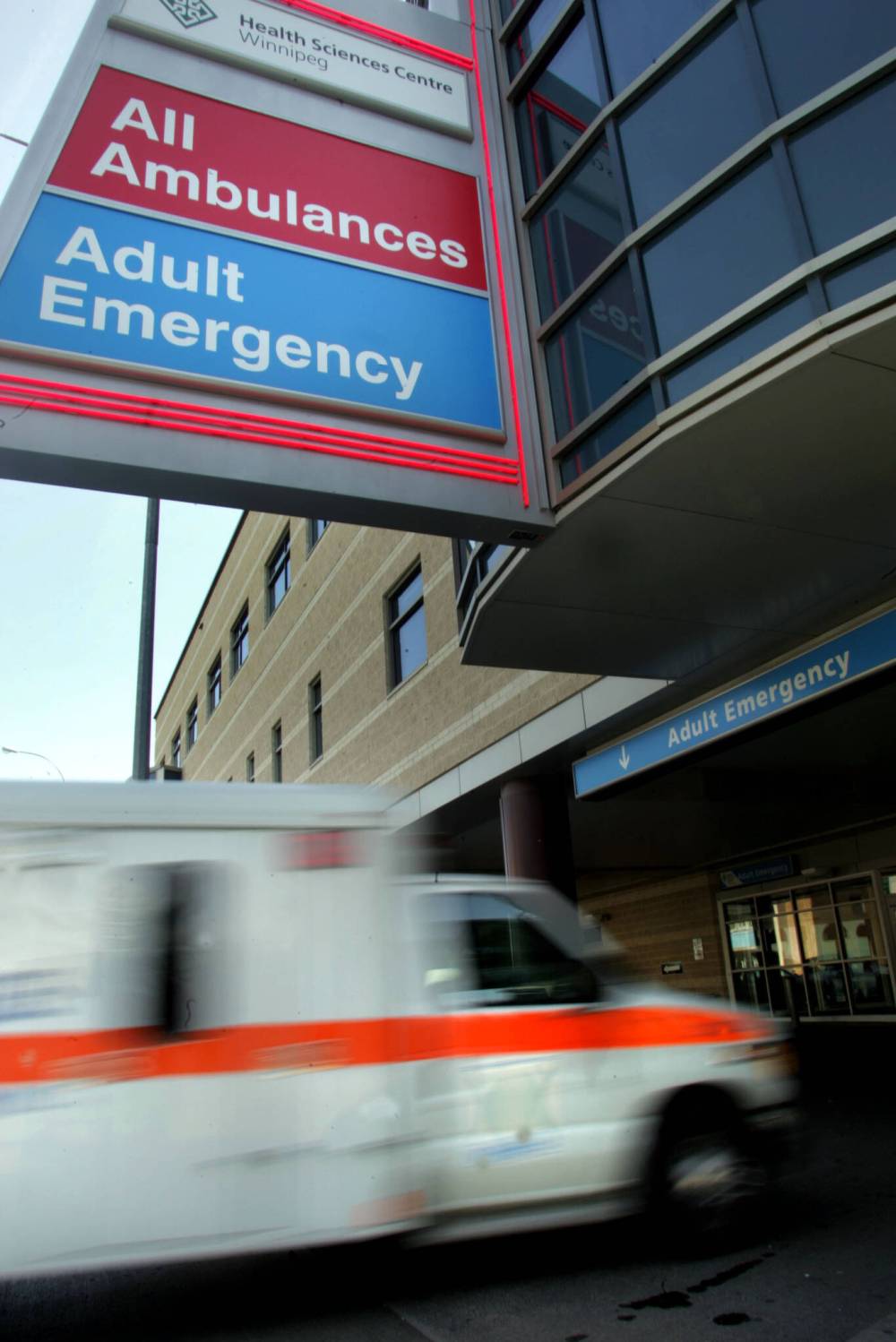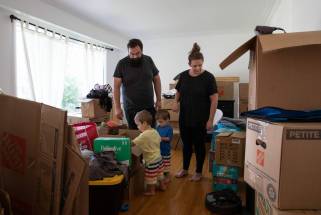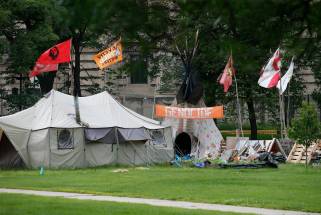HSC emergency department forced to close half its beds
Read this article for free:
or
Already have an account? Log in here »
To continue reading, please subscribe:
Monthly Digital Subscription
$0 for the first 4 weeks*
- Enjoy unlimited reading on winnipegfreepress.com
- Read the E-Edition, our digital replica newspaper
- Access News Break, our award-winning app
- Play interactive puzzles
*No charge for 4 weeks then price increases to the regular rate of $19.00 plus GST every four weeks. Offer available to new and qualified returning subscribers only. Cancel any time.
Monthly Digital Subscription
$4.75/week*
- Enjoy unlimited reading on winnipegfreepress.com
- Read the E-Edition, our digital replica newspaper
- Access News Break, our award-winning app
- Play interactive puzzles
*Billed as $19 plus GST every four weeks. Cancel any time.
To continue reading, please subscribe:
Add Free Press access to your Brandon Sun subscription for only an additional
$1 for the first 4 weeks*
*Your next subscription payment will increase by $1.00 and you will be charged $16.99 plus GST for four weeks. After four weeks, your payment will increase to $23.99 plus GST every four weeks.
Read unlimited articles for free today:
or
Already have an account? Log in here »
Hey there, time traveller!
This article was published 19/08/2022 (1206 days ago), so information in it may no longer be current.
Manitoba’s largest emergency department had to close about half of its beds Friday due to a lack of nurses.
Of 69 total beds, only the ones for the most seriously ill patients will remain open at Health Sciences Centre because nursing shifts are operating at about 30 per cent capacity.
Shared Health has cautioned the public that patients with less serious needs can expect to wait even longer as the hospital tries to call in additional staff to fill shifts this weekend.
One ER doctor, who spoke on condition of anonymity, said they’ve never seen this many bed closures in one day during their career. The doctor described it as the equivalent of a small-town hospital closing its ER entirely.
WAYNE GLOWACKI/WINNIPEG FREE PRESS FILES The Health Sciences Centre emergency department had to close about half of its beds Friday due to a lack of nurses.
“This is probably the first time we’ve had to close this many beds,” the ER doctor said Friday.
All of the beds in minor treatment areas of the ER are expected to be closed, leaving room only for the most urgent cases.
HSC is “projecting staffing challenges” in its adult ER this weekend, a Shared Health spokesperson acknowledged, and is trying to call in casual, part-time and regular nurses, as well as get the ER nurses currently on shift to work overtime.
The redeployment of ICU nurses to the ER will continue this weekend.
“The public should be assured that the sickest and most injured patients continue to be prioritized upon arrival in our (emergency department) to ensure they get the care they need with zero to minimal wait. Patients with lower-acuity concerns are advised to expect longer waits for care while more urgent patients are seen,” Shared Health stated.
All hospital wards, not just at HSC, are experiencing staffing shortages. But the ER at Health Sciences Centre is the most important treatment centre for trauma patients in Manitoba, northwestern Ontario, and Nunavut. The current staffing shortages forced seriously injured trauma patients to be treated in the hallway because all of the six resuscitation beds were full following a car crash earlier this week, nurses said. They also spoke on the condition of anonymity.
“This is probably the first time we’ve had to close this many beds.” – ER doctor
The resuscitation beds are usually full on a daily basis, the ER doctor said.
Victims of stabbings, gunshots or collisions, anyone with very low blood pressure or an abnormally fast heartbeat, and anyone in an altered state of consciousness needs the closest monitoring there. The area fills up fast because patients who show up to the ER are sicker than ever, and typically half of the beds in the ER are filled by patients who need to be admitted to hospital. It’s not unusual for them to have to wait a day or two for a hospital bed to open up in another department, the ER physician confirmed.
Nurses, including those who lack experience dealing with trauma patients, are splitting their focus between them.
“There are times, quite literally, where you are trying to manage two or three resuscitations at the same time as a physician. If that’s the case, you also have nurses who are being pulled between each, trying to figure out, OK, which one’s the sickest… which one are we going to go to first?” the doctor said.
“I know that our team does everything we can to make sure that the patient gets the best care. But there are numerous times at the end of the day where we doubt whether or not we’ve provided the best care for the patient.” – ER doctor
“It’s just constant, and we all talk about it, going ‘this is untenable.’ We just can’t sustain this pace, especially with our staffing model,” the physician said.
“I know that our team does everything we can to make sure that the patient gets the best care. But there are numerous times at the end of the day where we doubt whether or not we’ve provided the best care for the patient.”
One experienced ER nurse at HSC talked about her colleagues’ increasing sense of “moral distress” because they’re not able to properly focus on patients even as they work for 12 hours without a break.
In response to Free Press inquiries earlier this week, Shared Health acknowledged two trauma patients were kept in the hallway for about 30 minutes under the care of paramedics after they arrived by ambulance. Several trauma patients had arrived at HSC in a short time frame, and there was no immediate space for them amid increasingly high patient volumes in the ER, Shared Health stated.
ER staff don’t often get to see what happens to patients after they leave the department, but there’s more worry that making patients wait longer and longer is causing death, permanent injury, the need for more complex surgery, or other worsening conditions, the doctor said.
“Most of us, I think, we just bury it deep down, and say ‘we still have a job to do,’ no matter how we feel. But there’s more talk in general (about) ‘hopefully we just make it through the day and hopefully our patients make it through the day as well.’”
katie.may@winnipegfreepress.com

Katie May is a general-assignment reporter for the Free Press.
Our newsroom depends on a growing audience of readers to power our journalism. If you are not a paid reader, please consider becoming a subscriber.
Our newsroom depends on its audience of readers to power our journalism. Thank you for your support.








